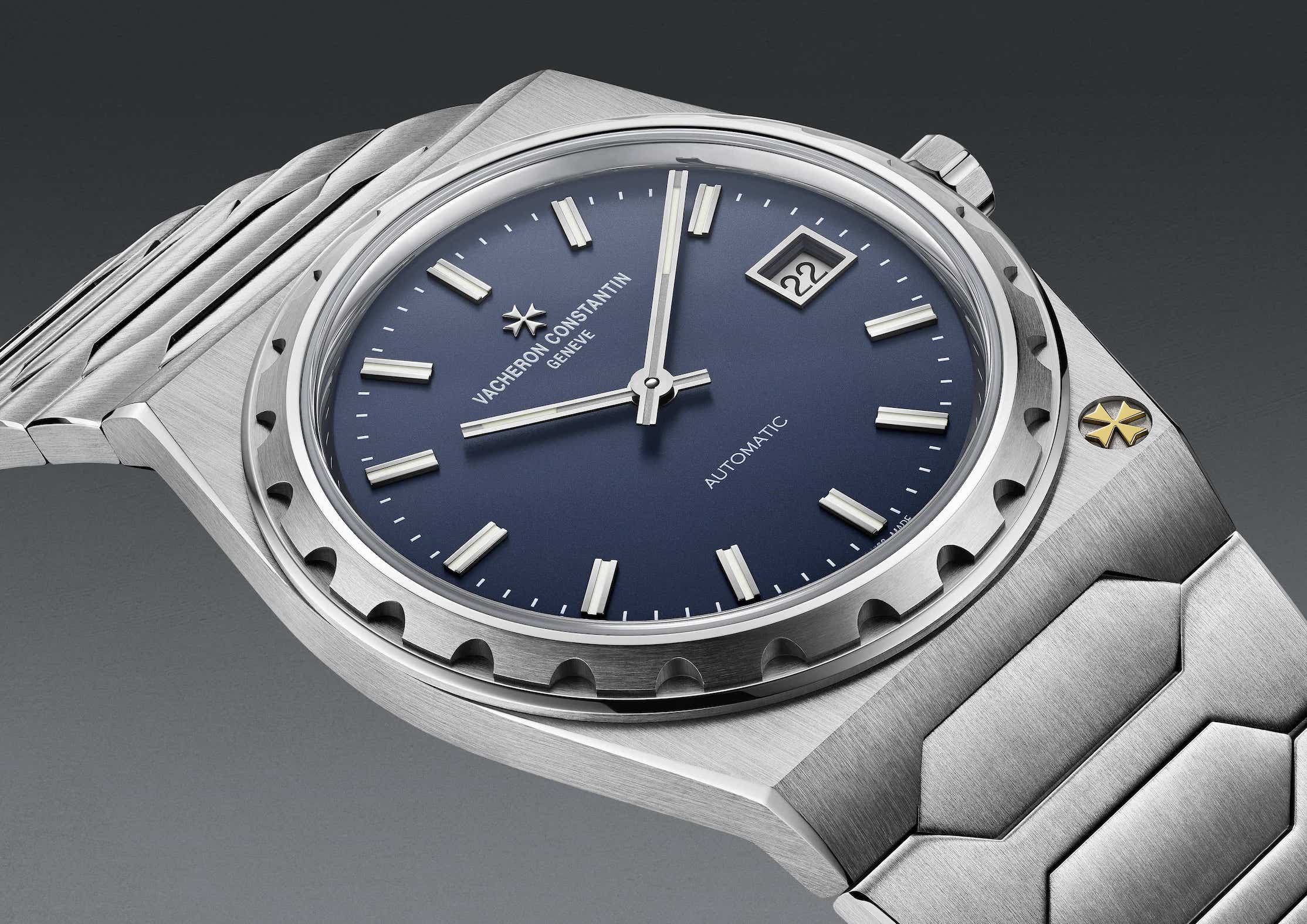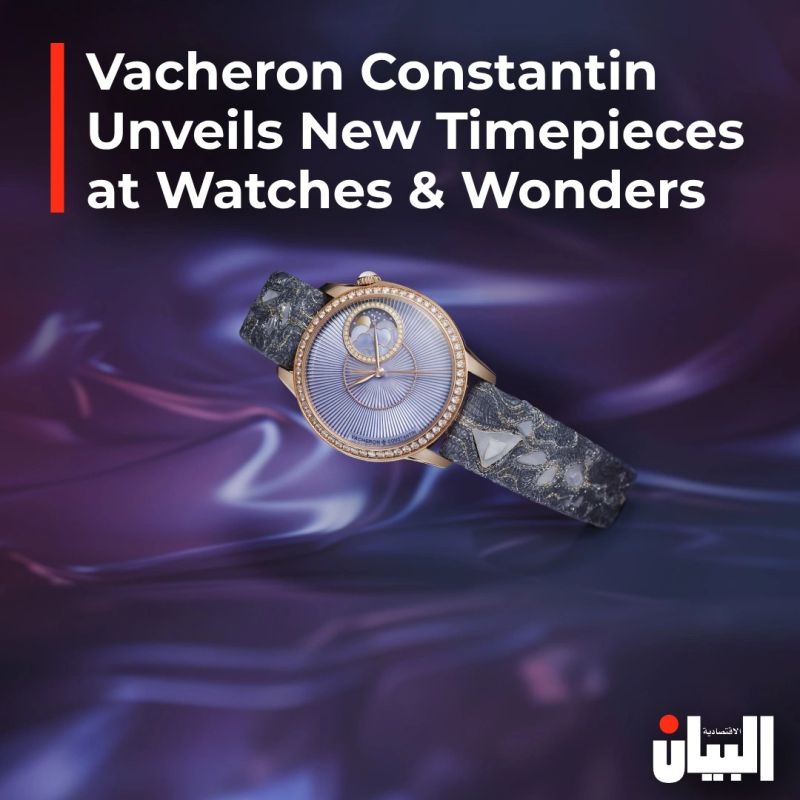
VACHERON CONSTANTIN LAUNCHES HISTORIQUES 222 STAINLESS STEEL TIMEPIECE
In 1755 in Geneva, Jean-Marc Vacheron began writing the first chapter of a story that has become a remarkable human adventure – a quest for excellence passed down from generation to generation. The passion, expertise and creativity of the men and women of the Manufacture have shaped Vacheron Constantin’s identity through a subtle balance between technical mastery and artistic sensitivity. Deeply rooted in the workshops, these values do much to explain the Maison’s longevity. Since the turn of this century, Vacheron Constantin has marked each new decade by honouring its heritage, looking to the future and issuing a number of exceptional timepieces.
Throughout 2025, to mark 270 years of creation, tradition and innovation, a series of celebrations begins with the reissue of an iconic timepiece, much awaited by its clients, the Historiques 222, cased in stainless steel.
An extraordinary human quest
In the 18th century, when Vacheron Constantin was born, Geneva was a peaceful and economically prosperous city. ‘The factory that flourished most in Geneva was the watchmaking industry, which accounted for more than a fifth of the city’s population’, noted Diderot and d’Alembert’s Encyclopédie. Its booming economy was matched by great cultural richness: the home city of Rousseau, it attracted other great minds, including Voltaire, who took up residence the same year that the Maison was established.
Jean-Marc Vacheron’s signing of his watchmaking apprenticeship contract in 1755 is regarded as the founding act of Vacheron Constantin – the beginning of a quest for watchmaking excellence driven by the determination and passion of successive generations. This contract also established a fundamental value of the Maison: the transmission of knowledge and skills. The sharing of knowledge over 270 years – at first supported by the open-mindedness of the Age of Enlightenment and always driven by the desire for constant progress – has forged the character of Vacheron Constantin. In 1819, Jacques Barthélémi Vacheron, the founder’s grandson, received a note from his new business partner, François Constantin, urging him to “do better if possible, and that is always possible”. This maxim remains the motto of the Maison to this day.
Vacheron Constantin’s enduring success lies in its singular approach to watchmaking – one that deftly balances technical mastery and artistic sensitivity, mechanical complexity and craftsmanship, innovation and elegance. Witness the pocket watch with chronograph and chiming mechanism set in an elaborately chased 20k gold case, created in 1918 for American industrialist James Ward Packard; and the Les Cabinotiers Armillary Tourbillon, a single-piece edition timepiece created in 2023 for the dashboard of the bespoke Rolls-Royce Amethyst Droptail.
Timepieces such as these encapsulate the creativity and skill of the Maison’s watchmakers, artisans and designers, driven by perseverance and passion as they constantly push the boundaries, like a quest driven by perseverance and mastery.
This pursuit of fine workmanship has defined the Maison’s identity for the past 270 years and is showcased through a new communication campaign rolled out in 2025. The campaign refers to the quest for excellence that has always motivated Vacheron Constantin, both in the most accomplished expression of the art of watchmaking and in the promotion and transmission of knowledge. The result is a visual story of a human adventure which longevity is entirely dependent on this seek for beauty. Woodkid, a French musician and artistic director who has been working with the Maison for the past three years, notably on mentoring programs, has composed music dedicated to this 270-year quest for excellence.
270 years of technical accomplishments and horological innovation
Throughout its history, Vacheron Constantin has been imbued with a boldly creative spirit that has given birth to countless innovations, particularly in the field of high complications and timekeeping precision.
From the first calendar timepiece recorded in the Manufacture’s archives in 1790 to the 2024 Les Cabinotiers The Berkley Grand Complication watch equipped with 63 complications, the Manufacture has explored many fields of technical expression: chiming watches, mechanisms for measuring short intervals of time, astronomical functions, special displays and tourbillon regulators.
These avenues of research and development have led to major innovations, not only in timekeeping mechanisms but also in the refinement of production processes. In 1839, the Manufacture engaged Georges-Auguste Leschot to invent a special watchmaking pantograph that enabled the standardisation and interchangeability of components for watches equipped with the same calibre. In 1934, it developed a portable high-frequency precision device enabling the calculation of 1/20th of a second.
In 1914 the Maison’s passion for technical innovation led to the creation of a very small rectangular movement named the tuyau (pipe). At just 26 mm long and 6.5 mm wide, it was the forerunner of the baguette movement, which was fitted to many jewellery watches. In 1932, Vacheron Constantin collaborated with Louis Cottier in developing Reference 3372, the first watch to incorporate the ‘Cottier system’ world time complication. Patented the previous year, the complication enables the simultaneous display of 24 time zones and was to become the standard on which almost all world time displays are based.
Many more world firsts have followed – among them the first retrograde date display (the “Don Pancho” in 1940), the first Hebraic perpetual calendar (Les Cabinotiers Reference 57260 in 2015) and the first Chinese perpetual calendar (Les Cabinotiers The Berkley Grand Complication in 2024). In 2019, the Maison developed a dual-frequency mechanism with two oscillators, presented in Calibre 3160 QP. By alternating between the 5 Hz oscillator (active mode) and the 1.2 Hz oscillator (standby mode), the power reserve can be extended to 65 days.
In Vacheron Constantin’s quest for excellence, accuracy of timekeeping is a prerequisite – equally fundamental in time-only calibres and the most complicated watches – such as Les Cabinotiers Celestia Astronomical Grand Complication 3600, which is orchestrated around civil, solar and sidereal time. This pursuit of timekeeping precision is symbolised by the Maltese cross that has been the Maison’s emblem since 1880. The emblem was inspired by the shape of a component in early movements that improved constant force from the mainspring.
In the 19th century, marine chronometers were synonymous with scientific progress, as the burgeoning of chronometry competitions – notably in Geneva from 1872 onwards – gave the Manufacture the opportunity to shine in this field. In 1869, Vacheron Constantin presented a pocket chronometer with a yellow gold hunter-type case and a white enamel dial, regulated by a highly accurate detent escapement. In 1947, a Vacheron Constantin pocket-watch, submitted to the Geneva Observatory and tested during the 44 days of the competition, registered an average daily deviation in rate of just two hundredths of a second.
In 1907, the Manufacture unveiled the Chronomètre Royal, conceived as a robust and highly technical timepiece that offered an outstanding level of precision and reliability. In 2007, the centenary of that watch was marked with a special re-edition that not only bore the Hallmark of Geneva and COSC chronometer certification, but also successfully passed the Manufacture’s stringent 30-day functional test.
Not content with simply mastering horological complications, Vacheron Constantin went further, combining them in highly complex calibres. During the first half of the 20th century, in keeping with long-established tradition, many special, high-complication timepieces were commissioned from the Maison by distinguished collectors or created as gifts for sovereign rulers. In 1929, King Fouad of Egypt was presented with a Grand Complication pocket watch with beautiful enamelling on the yellow gold case, by Egypt’s Swiss expatriate community. In 1946, as a gift for King Fouad’s son, King Farouk I, the Swiss government commissioned a chiming pocket watch in 18k yellow gold that combined a minute repeater with Grande and Petite Sonnerie with a split-seconds chronograph, perpetual calendar, indication of the phases and age of the moon, an alarm and two power reserves.
270 years of aesthetic mastery and bold creativity
Since the earliest days, the value that has clearly distinguished Vacheron Constantin from other watchmakers is that its continuing quest for complex mechanical engineering is inseparable from its pursuit of beauty and cultivation of aesthetic craftsmanship. This ethos is applied not only to the outside of timepieces but also to the inside part once assembled.
Every movement component is hand-finished – even those that are invisible once the watch is assembled. Many calibres carry the prestigious Poinçon de Genève (Geneva Seal), a hallmark awarded only to timepieces made in Geneva and attesting to the highest level of hand-decoration and finishing. Decorative techniques may include perlage, Côtes de Genève, bevelling, chamfering, mirror-polishing and engraving. An art unto itself, open-working involves the carving away of metal from movement components to leave only a fine structural skeleton that allows the eye to travel deep into the calibre – its most accomplished and technically demanding expression being the skeletonisation of ultra-thin movements.
Vacheron Constantin has its own métiers d’art workshops. Here, specialised artisans have mastered the crafts of engraving, gem-setting, enamelling and guillochage, among many others – elevating timepieces into miniature works of art and honouring a philosophy that dates back to the Maison’s beginnings.
An early example of this approach is a 1812 quarter-repeater watch with an enamel dial and guilloché caseback, which epitomised the Maison’s technical mastery and artistic sensibility. In 1943 the Maison introduced Reference 4261, a minute repeater with a record-setting ultra-thin movement just 3.2 mm thick. The technical prowess inherent in this movement is equalled by the pure elegance and sublime craftsmanship of its case and dial. At 36 mm in diameter and just 5.25 mm thick, the case – with double-stepped bezel and convex three-tiered sides – is complemented by teardrop-shaped lugs. On the sector dial, pierced dots mark the minutes and Roman numerals and faceted arrowhead hour markers are applied onto a guilloché pattern of concentric circles.
Today, combined with the Manufacture’s openness to world cultures (symbolised by its partnerships with some of the world’s greatest institutions – the Louvre in Paris, the Metropolitan Museum in New York and the Educational Institute of the Palace Museum in Beijing), the expertise housed in the métiers d’art workshops has made possible the creation of pieces that are as original as they are beautiful. Among many examples the Métiers d’Art – Tribute to Great Civilisations (2022)). With four discs indicating the hours, minutes, days and dates, they seamlessly blend mechanics and art into a whole.
Throughout Vacheron Constantin’s history, its deep commitment to craft has been allied to great creative flair, fostering a signature that has been perpetually in tune with its time – inspired and progressive yet always imbued with classical elegance.
In the 1920s, as men began to adopt wristwatches rather than carrying pocket watches, Vacheron Constantin introduced the American 1921, an avant-garde wristwatch named after its year of launch and the market for which it was secretly produced. Capturing the spirit of the Roaring Twenties, it is said to have been originally designed with drivers in mind: with a cushion-shaped case offset by 45 degrees and the crown at 1 o’clock, its white enamel dial reveals time at a glance with no need for the driver, according to legend, to lift his hand from the steering wheel.
In June 1972, the French government awarded the rare Diplôme du Prestige de la France to Vacheron Constantin – the first watch company to receive the honour. To celebrate this honour, Vacheron Constantin designed a new wristwatch with an oval movement set in an asymmetrical quadrilateral case – an early example of the bold aesthetics that characterised the emancipatory style of the 1970s.
Since the creation of the Maison’s first ladies’ watch in 1889, Vacheron Constantin’s quest for innovative and imaginative watchmaking has consistently led it to pay particular attention to High Jewellery timepieces. A curved version of the baguette movement was made in 1916 for a ladies’ wristwatch acquired by the Maharaja of Patiala, Sir Bhupinder Singh. Crafted in platinum and diamonds, its open-worked, chased and engraved case enables a sideways view of the time. In 1979, the presentation of the Kallista represented the apotheosis of High Jewellery watchmaking. Carved from a one-kilo gold ingot and set with 118 diamonds totalling 130 carats, it required 6,000 hours of work.
In 1994, exploring an entirely different stylistic avenue, Vacheron Constantin commemorated the 400th anniversary of the death of the Flemish Renaissance cartographer Gerhard Kremer, known as Mercator. The dial of the Mercator watch features a multicoloured champlevé enamel motif representing one of his hemisphere maps and the movement features bi-retrograde hours and minutes. Time displays such as this, including jumping hours and retrograde indications, are a signature of the Maison – their visually engaging style underpinned by highly sophisticated mechanics.






انشر تعليق